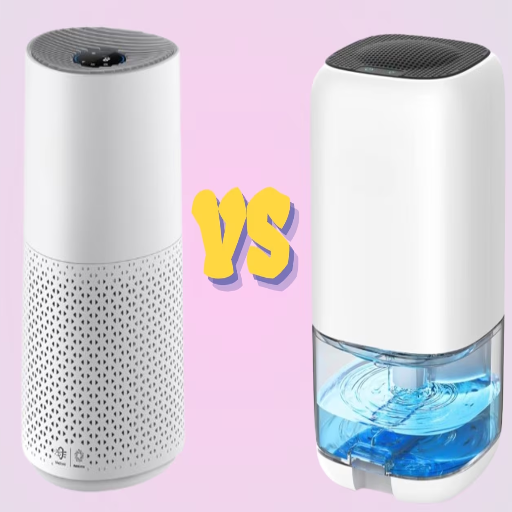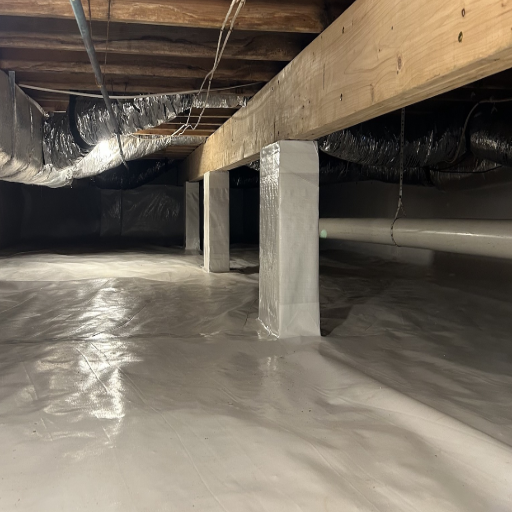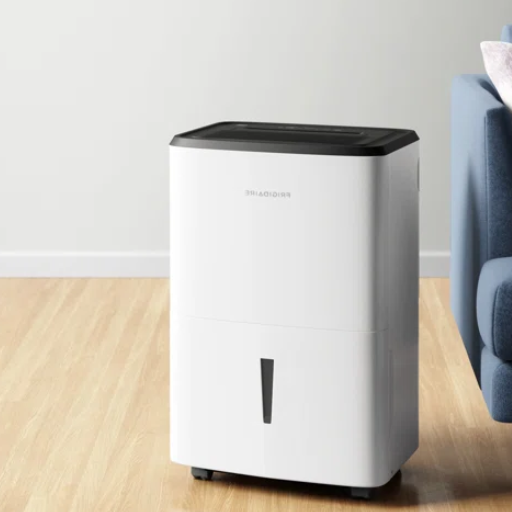Keeping the right humidity level in our home is vital to creating a relaxed and healthy living space. Problems such as ostentatious mold, musty smells, allergies, and breathing difficulties can arise from too much moisture in the air. A dehumidifier can help keep indoor humidity in check while also improving the quality of life, making it an invaluable tool.
In this post, we will cover everything you need to know in order to utilize a dehumidifier which includes setting, monitoring, and performing maintenance on the device so that it can function optimally for longer. But first, we will discuss the impact of humidity control and the different ways it can affect your home. By the end of this blog post, your understanding of how to best use a dehumidifier to achieve your desired comfort and air quality will be comprehensive.
What Should I Set My Dehumidifier At?
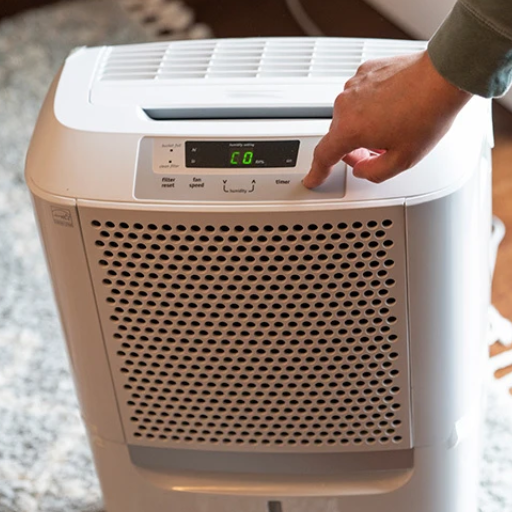
Most households are comfortable with the humidity level set between 30% and 50%. In the summer, you may want to keep it closer to 50%, while in the winter, it should be around 30% to avoid condensation and mold growth. Using a hygrometer will allow you to track indoor humidity levels so that you can set your dehumidifier to the desired levels. Such balance will certainly prevent further harm to the household by ensuring moisture-related damages are kept to a minimum.
Understanding the Ideal Humidity Level for Your Home
Maintaining the ideal humidity level in your home is essential for comfort, health, and protection of your belongings. High humidity can lead to issues like mold growth, dust mites, and increased allergens, while low humidity can cause dry skin, respiratory discomfort, and damage to wooden furniture. To achieve a healthy indoor environment, monitor humidity using a reliable hygrometer. Adjustments can be made by using a humidifier or dehumidifier, ensuring levels stay between 30% and 50%, depending on the season. Proper ventilation, sealing leaks, and regulating temperature also help maintain optimal humidity, ensuring your home remains safe and comfortable year-round.
How to Set My Dehumidifier for Different Seasons
The corresponding relative humidity setting will maximize comfort and energy efficiency for the entire year. In summer when humidity is high, try to set the dehumidifier between 40% to 50% to keep the environment cool and comfortable while mold does not form. Change the setting to around 50% to 55% for spring and fall since there is usually a natural increase in humidity during these shifting seasons. If humidity remains high during winter, for example in basements or poorly ventilated spaces, set the dehumidifier to about 30% to 40% to prevent condensation and damage from excess moisture. Use a hygrometer to keep track of humidity levels and make necessary changes to the dehumidifier setting in order to maintain ideal indoor air quality throughout the year.
The Role of Relative Humidity in Comfort
Relative humidity plays a vital role in maintaining indoor comfort and overall well-being. It refers to the percentage of moisture in the air compared to what the air can hold at a given temperature. Ideally, indoor relative humidity levels should range between 30% and 50% for optimal comfort and health. When levels drop too low, the air can feel dry, leading to skin irritation, respiratory discomfort, and increased susceptibility to colds or illnesses. Conversely, excessive humidity can make a space feel stuffy, encourage mold and mildew growth, and attract dust mites, which can exacerbate allergies or asthma. Balancing relative humidity creates an environment that not only feels pleasant but also supports better air quality and reduces potential damage to furniture, walls, and electronics. Regular monitoring and adjusting with tools like humidifiers or dehumidifiers are essential for achieving this balance.
How Does a Dehumidifier Help with Dampness?

A dehumidifier works by drawing in moist air, removing excess humidity, and releasing drier air back into the environment. This process helps reduce dampness, which can prevent the growth of mold, mildew, and bacteria. By maintaining optimal humidity levels, a dehumidifier protects your home’s structure, improves air quality, and creates a more comfortable living space.
Reducing Moisture in the Air Efficiently
To efficiently reduce moisture in the air, start by identifying the sources of excess humidity, such as poorly ventilated bathrooms, leaky pipes, or frequent cooking without ventilation. Use a dehumidifier suited to your space’s size for optimal performance, ensuring it has proper placement and maintenance. Additionally, improve airflow throughout your home by opening windows, using exhaust fans, and placing indoor plants like peace lilies that naturally absorb moisture. Sealing gaps in windows and doors and promptly fixing leaks can also prevent excess moisture buildup. Combining these methods creates an environment with healthier humidity levels, reducing the risks of mold and ensuring a comfortable living space.
Preventing Mold and Mildew Growth
Preventing mold and mildew involves maintaining a dry, clean environment and controlling humidity. Start by ensuring your home’s humidity levels stay below 50%, using a dehumidifier if necessary. Proper ventilation is essential—use exhaust fans in areas prone to moisture like bathrooms, kitchens, and laundry rooms, and keep windows open when possible to encourage airflow. Regularly clean and inspect susceptible areas, such as under sinks, behind appliances, and within basements, promptly addressing any water leaks or visible dampness.
Using mold-resistant products during construction or renovations, like mold-inhibiting paint or insulation, adds an extra layer of protection. Additionally, ensure gutters and drainage systems direct water away from your home’s foundation to prevent moisture buildup. When cleaning, use mold-killing solutions like a mixture of bleach and water for infected surfaces, and always dry the area thoroughly afterward. By combining consistent maintenance, proactive repairs, and smart home-care practices, you can successfully reduce the risk of harmful mold and mildew growth.
Improving Airflow for Better Results
Increasing airflow in the house is critical for the home’s environment in order to reduce the chances of mold or mildew to thrive. Begin by enhancing ventilation in the bathrooms as well as in the basement cuisine. These tend to be areas with stagnant moisture. You can boost air circulation by opening windows or turning on exhaust fans. For non-stop ventilation, consider using a ventilation system that works for the entire house. To enhance the circulation of air in the house, remember to change HVAC filters and have the ducts cleaned regularly. Strategic furniture arrangement allows vents to be unclogged and aids in leaving doors open so that air can flow freely between different rooms. Ceiling fans can be very useful too, not to mention having a ventilated attic will improve air circulation in the house.
How to Determine the Right Humidity Setting for Different Areas?

Determining the ideal humidity setting depends on the specific function and conditions of each area in your home. For living areas such as bedrooms and living rooms, aim for a relative humidity level between 30% and 50%, which ensures comfort while reducing the risk of mold and dust mites. Kitchens and bathrooms, which are prone to higher moisture levels, may benefit from enhanced ventilation and maintaining humidity under 50% to prevent condensation and mildew. Basements often require tighter control, with levels ideally kept below 50% to combat dampness. Using a hygrometer to monitor indoor humidity is an effective way to maintain the right balance, ensuring a healthy and comfortable environment throughout your home.
Living Room: Achieve the Desired Humidity
It is essential to maintain the appropriate humidity level in a living room for comfort and health. Studies show that indoor humidity levels should be maintained between 30 and 50 percent. These levels help in avoiding respiratory issues, minimizing mold development, and safeguarding electronic devices, furniture, and wooden artifacts from damage due to moisture or dryness. To maintain humidity levels, a humidifier might be useful during extremely dry seasons or a dehumidifier might be helpful in more humid periods. Moreover, proper ventilation by way of opening windows or switching on exhaust fans when possible is encouraged. These instruments, though, need to be complemented with reliable hygrometers, which allow for regular checks of humidity so that methods can be employed to achieve equilibrium in the climatic condition.
Setting Your Dehumidifier in the Basement
When setting up a dehumidifier in your basement, placement is crucial for optimal performance. Position the unit in the center of the space or in the area with the most noticeable moisture issues, ensuring at least six inches of clearance from walls or furniture to allow for proper airflow. Select an appropriate dehumidifier size based on your basement’s square footage and the level of humidity—larger or excessively damp basements may require a high-capacity unit.
Once positioned, connect the dehumidifier’s drainage system if continuous operation is needed. Many models come with a drainage hose that can be directed into a floor drain, sump pump, or nearby sink, preventing the need to empty the water tank manually. Ensure that the settings are adjusted to maintain a relative indoor humidity of around 30-50%, as this range inhibits mold growth and keeps the space comfortable.
To maximize efficiency, check and clean the dehumidifier’s filter regularly, and inspect the unit for any blockages or maintenance needs. Running the dehumidifier during the most humid times of the year, such as summer, is key to maintaining a dry and healthy basement. Finally, combine its operation with good ventilation practices, such as using an exhaust fan or opening basement windows periodically, to support air circulation and moisture control.
Optimal Humidity Range for Bedrooms
The optimal humidity range for bedrooms is generally between 30% and 50%. Maintaining this range is crucial for comfort and health, as excessive humidity can promote allergens like mold and dust mites, while low humidity may lead to dry skin and respiratory irritation. To achieve this balance, consider using a hygrometer to monitor indoor humidity and adjusting accordingly with a humidifier or dehumidifier. Proper insulation, sealing windows, and ensuring adequate airflow are additional steps to help maintain consistent humidity levels, contributing to a better sleeping environment.
How Often Do I Need to Use a Dehumidifier?
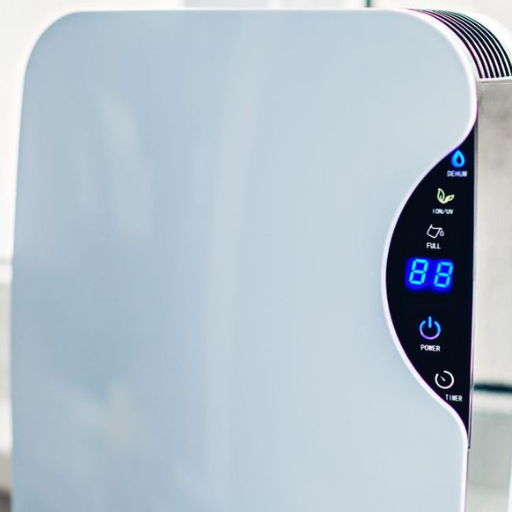
The frequency of using a dehumidifier depends on your indoor humidity levels and the specific conditions of your home. Ideally, indoor humidity should stay between 30-50%. You may need to use a dehumidifier more frequently during humid seasons or if you notice signs like condensation on windows, musty odors, or mold growth. Regular monitoring with a hygrometer can help you determine when it’s necessary to run the dehumidifier to maintain comfortable and healthy air quality.
Factors That Affect Humidity in the House
From my research, there are several key factors that influence indoor humidity levels. These include the season, as warmer months naturally bring higher humidity levels due to increased moisture in the air. Another major factor is ventilation—poor airflow can trap moisture inside, while proper ventilation helps regulate it. Home activities like cooking, showering, or drying clothes indoors significantly raise humidity levels as well. Additionally, the construction and insulation of the house play a role—tightly sealed homes may retain more moisture, requiring the use of exhaust fans or dehumidifiers.
Signs You Need to Run Your Dehumidifier More Frequently
Condensation on Windows and Walls
Persistent fogging or visible droplets on your windows and walls indicate high humidity levels in your home. This excess moisture can lead to mold growth and damage to wooden surfaces.
Musty Odors
A strong, musty smell is a clear sign of mold or mildew developing in damp areas. If this odor persists, it’s time to run your dehumidifier more often to prevent further issues.
Mold Spots
Noticing black, green, or fuzzy patches on walls, ceilings, or in corners is a direct sign of excess moisture. Mold is harmful to both the home structure and your respiratory health.
Allergy Flare-Ups
Increased humidity can worsen indoor allergens like dust mites and mold, causing symptoms such as sneezing, coughing, or itchy eyes. Consistent use of a dehumidifier can help improve air quality.
Peeling Paint or Wallpaper
High moisture levels can cause paint, wallpaper, or plaster to peel and bubble, especially in kitchens and bathrooms. Addressing the humidity with a dehumidifier reduces the risk of further damage.
Rust Formation
If you notice metal items like tools, fixtures, or appliances developing rust, it’s a sign that your indoor environment is too humid and could benefit from dehumidification.
By recognizing these common signs, you can proactively manage indoor humidity and preserve the comfort and health of your living space.
How to Ensure Your Dehumidifier’s Efficiency
To maximize the efficiency of your dehumidifier and ensure it operates effectively, follow these best practices:
Position the Dehumidifier Properly
Place the dehumidifier in a central location or where humidity issues are most pronounced, such as basements or bathrooms. Ensure there’s adequate space around the unit for airflow, usually at least 6-12 inches from walls and furniture.
Set the Humidity Level Correctly
Most dehumidifiers allow you to set a target humidity level. For optimal comfort and to prevent mold, maintain indoor humidity between 30-50%. Avoid overly dry conditions, which can cause discomfort.
Regularly Clean the Filter and Coils
Dirty filters or coils can restrict airflow and reduce efficiency. Clean or replace the filter monthly (or as recommended by the manufacturer) and inspect the coils to ensure they are free from dust and debris.
Empty the Water Reservoir or Maintain Drainage
If your dehumidifier doesn’t have continuous drainage, regularly empty the water reservoir to ensure uninterrupted operation. Models with a hose for continuous drainage should be checked periodically to prevent clogs.
Keep Doors and Windows Closed
To ensure your dehumidifier is working on indoor air exclusively, keep doors and windows closed when it’s running. This prevents it from overworking in response to outdoor humidity levels.
Monitor Performance and Adjust Accordingly
Periodically check your dehumidifier’s performance. If you notice it takes longer to reduce humidity or if it’s less effective, it may be time to perform maintenance or replace the unit.
Conduct Routine Maintenance
Follow the manufacturer’s maintenance guidelines, including cleaning components like the water tank, vents, and sensor probes. Routine care extends the lifespan and efficiency of your device.
By implementing these strategies, you can enhance your dehumidifier’s performance, preserving indoor air quality and ensuring a more comfortable living space.
What Are the Benefits of Maintaining Proper Humidity Level?
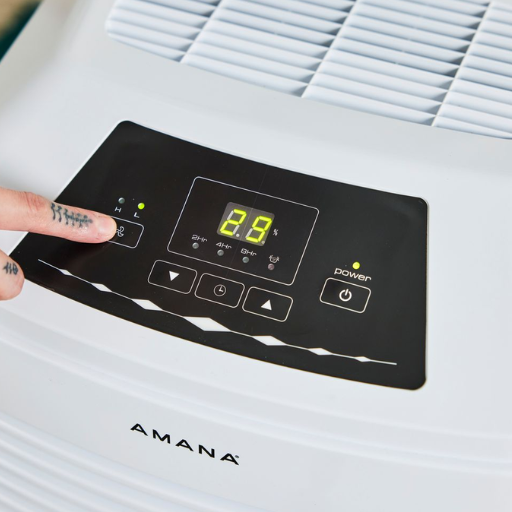
Maintaining proper humidity levels in your home offers numerous benefits for both health and comfort. It helps prevent mold growth and reduces allergens like dust mites, creating a healthier living environment. Balanced humidity levels also protect furniture, wood floors, and electronics from damage caused by excessive moisture or dryness. Additionally, they improve air quality, reduce energy costs by optimizing HVAC efficiency, and enhance overall comfort by preventing dry skin, nasal irritation, and respiratory discomfort.
Enhancing Comfort and Health at Home
Maintaining a healthy and comfortable home environment starts with monitoring and adjusting indoor conditions. To prevent mold and reduce allergens, aim to keep indoor humidity levels between 30-50%. This can be achieved using dehumidifiers in damp areas or humidifiers when the air feels too dry. Regularly cleaning and vacuuming with HEPA filters is essential to minimize dust and pet dander, contributing to better air quality. Ensuring proper ventilation, particularly in kitchens and bathrooms, helps remove excess moisture and odors, while air purifiers can further reduce indoor pollutants.
Additionally, inspect and maintain your HVAC system to promote efficiency and consistent air circulation. Investing in high-quality air filters and replacing them every 1-3 months ensures your system runs optimally. For thermal comfort, consider insulating windows and doors to stabilize indoor temperatures while saving energy. Lastly, integrating indoor plants can naturally improve air quality and create a relaxing, inviting space for your family. These strategies combined will elevate your home’s health and comfort while supporting overall well-being.
Preventing Mold Growth and Condensation
Mold growth and condensation are common indoor issues that can be mitigated with proactive measures. Start by controlling humidity levels; ideally, maintain indoor humidity between 30% and 50% using dehumidifiers or air conditioners. Ensure proper ventilation in areas like kitchens, bathrooms, and basements by using exhaust fans that vent to the outside or by opening windows when weather permits. Address water leaks promptly, as persistent dampness creates the perfect conditions for mold and condensation. Insulate pipes and windows to prevent cold surfaces from attracting moisture, and improve overall insulation in the home to reduce temperature fluctuations that encourage condensation. Regular cleaning of high-risk areas, combined with using mold-resistant products such as paint or drywall, can help prevent these issues from becoming long-term problems. Consistently monitoring and maintaining your living space can significantly reduce the risks of mold and condensation.
Improving Energy Efficiency and Reducing Costs
Enhancing energy efficiency in your home can lead to substantial cost savings while reducing your environmental footprint. Start by sealing gaps and cracks in doors, windows, and walls to prevent air leakage, ensuring better temperature regulation. Upgrading to energy-efficient appliances, such as refrigerators, washing machines, and HVAC systems, can significantly cut electricity usage. Additionally, incorporating LED lighting can reduce energy consumption while lasting longer than traditional bulbs.
Proper insulation is another key component—consider installing attic, wall, and floor insulation to maintain indoor temperatures more effectively, lowering heating and cooling requirements. Smart thermostats can also help optimize energy usage by allowing precise control over temperatures and scheduling, reducing unnecessary energy expenditure.
Switching to renewable energy sources, like solar panels, is a long-term investment that not only decreases utility bills but also increases your home’s value. Lastly, adopting water-saving measures, such as low-flow showerheads and faucets, can further minimize utility costs. Implementing these strategies holistically creates a sustainable and budget-friendly approach to energy efficiency.
References
Frequently Asked Questions (FAQ)
Q: What is the optimal humidity level to set on a dehumidifier?
A: The optimal humidity level for comfort and to prevent damp and mould is typically between 30% and 50%. Setting your dehumidifier to 55 can help achieve this balance in your home.
Q: How do I know if my dehumidifier is set to the right humidity?
A: Most dehumidifiers have a digital display that shows the current relative humidity (rh) in the room. You can adjust the settings to ensure it maintains the desired level. Keeping the humidity between 30% and 50% is generally recommended.
Q: Can dehumidifiers help reduce the humidity in the whole-house?
A: Yes, whole-house dehumidifiers can be integrated with your central heating and cooling system to manage the humidity levels throughout your entire home.
Q: How often should I empty the water tank in my dehumidifier?
A: The frequency depends on the model and the amount of moisture in the air. Smaller units, such as 50 pint or litre models, may need to be emptied daily, while larger ones with continuous drainage options require less frequent maintenance.
Q: What happens if the humidity outside is very high?
A: If the humidity outside is high, your dehumidifier may need to work harder to keep the humidity inside at a comfortable level. You may notice it running more frequently to condense and remove excess moisture from the space.
Q: Can a dehumidifier help if I suffer from condensation?
A: Yes, a dehumidifier can help reduce condensation by removing excess moisture from the air in your home, thus preventing damp air from settling on cold surfaces and causing condensation.
Q: Is it possible to have air that is too dry?
A: Yes, setting your dehumidifier too low can lead to overly dry air, which can cause issues like dry skin and respiratory discomfort. It’s important to set the right humidity level to keep the air comfortable.
Q: How can I ensure my dehumidifier is working at its best?
A: To keep your dehumidifier working at its best, regularly clean the filter, ensure proper airflow around the unit, and set the humidity level according to the conditions in your home.
Q: Why do some dehumidifiers need more maintenance than others?
A: Different models have varying capacities and features, which can affect maintenance needs. For example, a model with a larger water tank will require less frequent emptying, while those with filters that clean the air may need more regular cleaning.
Q: Can a dehumidifier help keep the air fresh in my wardrobe?
A: Yes, using a small dehumidifier in your wardrobe can help keep the air dry and fresh, reducing the risk of damp and mould on clothes, especially in muggy conditions.

